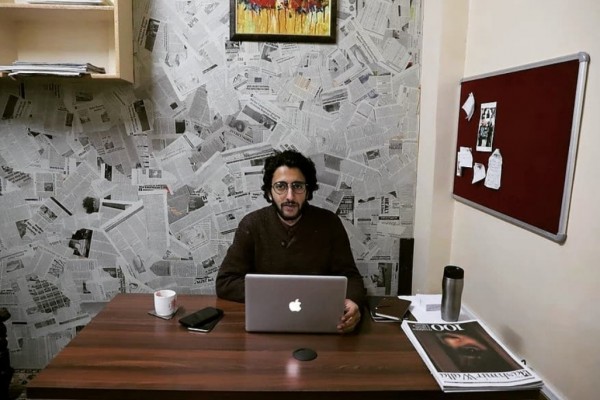It’s been fascinating to watch as India’s The Wire has emerged over five years as one of the key new digital voices in South Asia. It’s developed a distinct voice and filled an important gap, particularly as the country has been confronted with the challenges of populism and religious conflict.
Over that time, I’ve had the opportunity to talk to two of the three founders – Siddharth Varadarajan and Sidharth Bathia – about their challenges. Recently, I got to chat with the third founder, MK Venu, a member of the International Press Institute (IPI), about their hard-headed hopefulness in the time of Covid-19 about Indian journalism.
The defining characteristic of India’s news site The Wire is that it’s not-for-profit. That was a strategic decision made by the three founders five years ago to ensure the portal’s independence amid the turmoil of the country’s politics, culture and society.
This month, The Wire has turned five, fresh from proving that deeply reported accountability journalism that’s trusted by its audience can be translated into sustainable revenues.
In their anniversary editorial, The Wire said:
“…as our readers and viewers will testify, the bet we took on the main advantage of being non-profit – that it would help our journalism remain fiercely independent – has proved a winning one. The fact that we answer to no ‘boss’ is what has enabled us to follow the story no matter whose toes end up getting trod on.”
Its donations programme was launched in 2018, which positioned it well to benefit from the flight to quality journalism driven by the pandemic. According to Venu, about 50,000 individuals have made donations so far and they aim to stabilize recurring donations at about 15 to 20 percent of that total. Numbers are up by 20 to 30 percent this calendar year.
The Wire’s donors have been critical to fill the gap in revenues from advertising (down by about half, says Venu) and the loss of some previously larger donors made cautious by the attacks on The Wire by the Modi government and its populist allies.
The Wire launched on May 11, 2015, as a not-for-profit, supported in the early years by foundations and large donors, including a three-year start-up grant from the Bangalore-based Independent and Public Spirited Media Foundation. It publishes in English, HIndi, Marathi and Urdu.
It’s three founders brought deep news experiences, with over 100 years writing and editing Indian media between them. This embedded the site’s values in journalism as a force for holding all forms of power to account – political, corporate or caste.
Right now, The Wire is providing some of the best coverage in the Asia-Pacific region on the impact of the coronavirus and the lock-down on disadvantaged and disempowered Indians. Its reporters have focused on the increased abuse of power under cover of the current emergency.
It’s never had a pay-wall, ensuring its journalism is widely available. It’s relied on programmatic ads from Google AdSense and YouTube. But the bulk of its support comes from a diverse base of individual donors together with some support from foundations.
The ruling party has targeted The Wire directly, most notoriously through the “spreading panic” police complaint against co-founder Siddharth Varadarajan. As we wrote in the previous issue of The Story , the complaint reflects the intertwining of politics and religion and has united the Indian media fraternity against government overreach.
(By background: In the context of attacks on Muslims after participants at a religious gathering in Delhi spread the virus, Varadarajan tweeted a reminder that large Hindu gatherings were held or planned even after the lockdown was announced.)
On the day the Tablighi Jamaat event was held, Adityanath insisted a large Ram Navami fair planned for Ayodhya from March 25 to April 2 would proceed as usual and that ‘Lord Ram would protect devotees from the coronavirus”. https://t.co/rO09bSkHSe via @TheWire_in
— Siddharth (@svaradarajan) March 30, 2020
These and other attacks have made some large donors nervous about being pressured by the government but, says Venu, individual donors have shown real courage in stepping up in support.
The growth of small donors has strengthened The Wire, showing you can build a strong accountable journalism site off small donors. “Nobody else has been able to do that in India so far. We could only do that by diversifying donations from our readers.”
In the current lock-down, on-line news readership for all providers has grown as the lockdown has disrupted the distribution of many traditional print papers.
The Wire’s readership is also up, with Venu saying they have 16 to 17 million page views and 7 or 8 million uniques a month across the English and Hindi editions. YouTube is one of their big successes, with 24 million views a month – comparable to a mid-sized television channel. Google Analytics tells them their audience is young and educated.
“We want to see how much of that is going to be sustained”, says Venu. “Will people get used to not having newspapers? Advertisers are already thinking about how they monetise eyeballs.”
But, he stresses, their focus remains on building the donation base: “The community we have built – the readership, the viewership – they are emotionally, intellectually, committed to us. They stick by us and they keep giving recurrent donations.”



